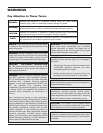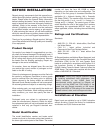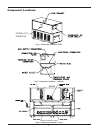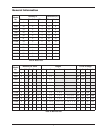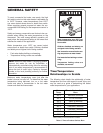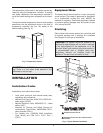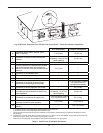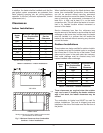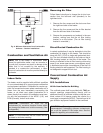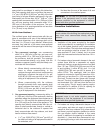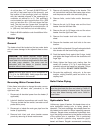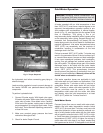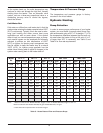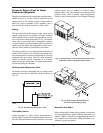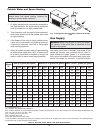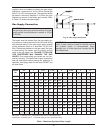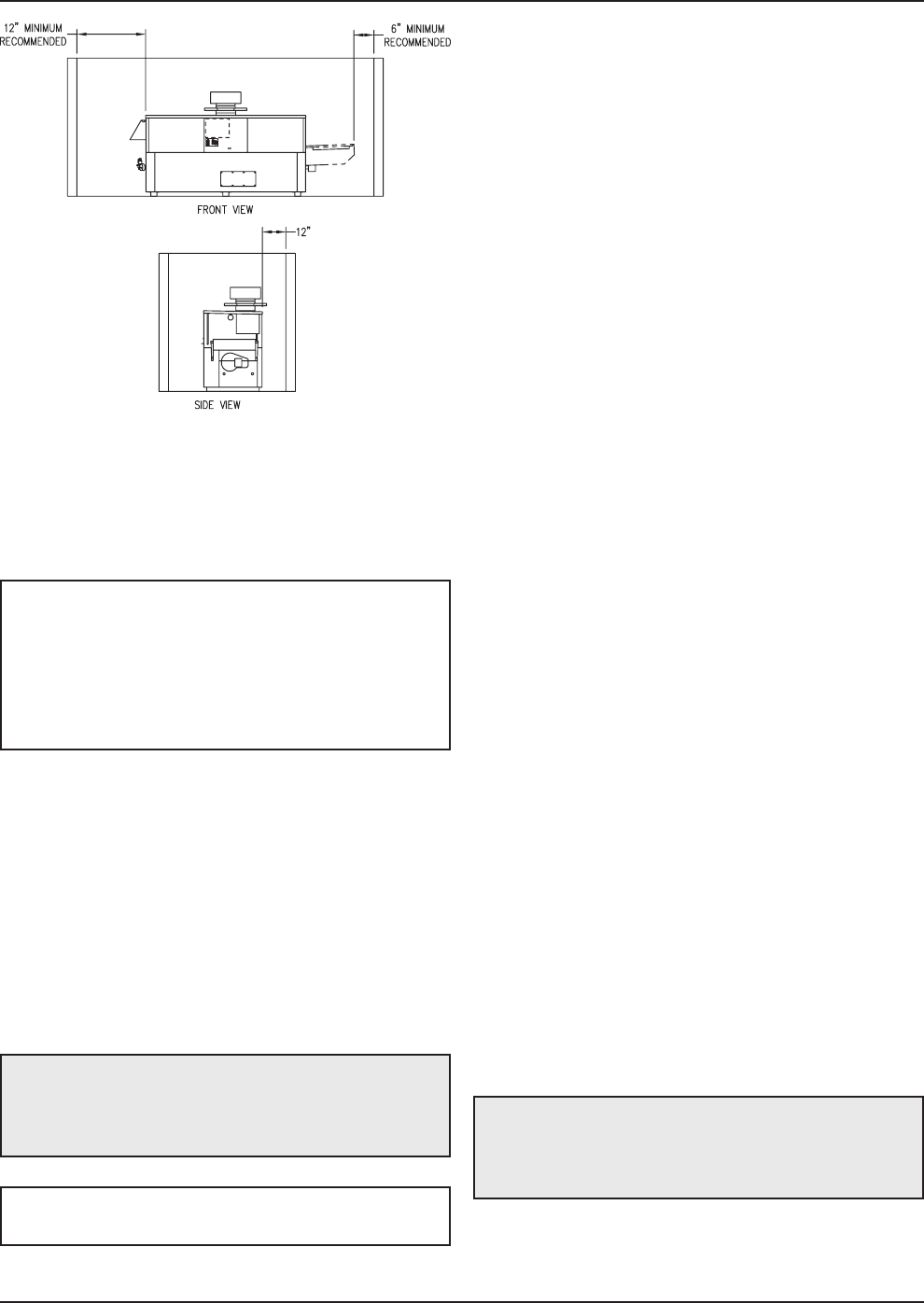
three or four sheet metal screws (not supplied) equal-
ly distributed around the circumference of the duct. All
ducting should be self-supported. The filter housing is
not designed to support the air duct.
Conventional Combustion Air
Supply
U.S. Installations
All Air from Inside the Building
The confined space shall be provided with TWO per-
manent openings communicating directly with an
additional room(s) of sufficient volume so that the com-
bined volume of all spaces meets the criteria for a
room large in comparison (NFGC). The total input of all
gas utilization equipment installed in the combined
CAUTION: This type of installation is
recommended if damaging airborne contaminants
are or will be present in the heater area. See the
Appendix regarding air contamination.
Fig. 8: Minimum Clearances from Combustible
Surfaces – Outdoor Installations
Combustion and Ventilation Air
Indoor Units
The heater must be supplied with sufficient quantities
of non-contaminated air to support proper combustion
and equipment ventilation. Combustion air can be sup-
plied via conventional means where combustion air is
drawn from the area immediately surrounding the
heater, or via direct vent, where combustion air is
drawn directly from outside. All installations must com-
ply with the requirements of the NFGC (U.S.) and
B149 (Canada), and all local codes.
Reversing Air Filter
Follow these instructions to change the air duct con-
nection from the left-hand side (standard) to the
right-hand side:
1. Remove the four screws and the dust cover from
the right-hand side of the heater.
2. Remove the four screws and the air filter bracket
from the left-hand side of the heater.
3. Reverse the components and reattach in the new
location, making sure that the air filter locking
bracket is on the bottom. (The air filter locking
bracket is reversible.)
Direct-Ducted Combustion Air
In certain applications it may be desirable to duct the
combustion air directly to the heater. This should be
done with PVC, CPVC or single-wall galvanized duct-
ing. The duct will attach directly to the collar on the air
filter housing located on the side of the heater. The
ducting is attached to the air filter housing collar using
CAUTION: Combustion air must not be
contaminated by corrosive chemical fumes which
can damage the heater and void the warranty. (See
the Appendix.)
NOTE: It is recommended that the intake vent be
insulated to minimize sweating.
NOTE: Use of the heater in construction areas
where fine particulate matter, such as concrete or
dry-wall dust, is present may result in damage to the
heater that is not covered by the warranty. If
operated in a construction environment, a clean
source of combustion air must be provided directly to
the heater.
12



